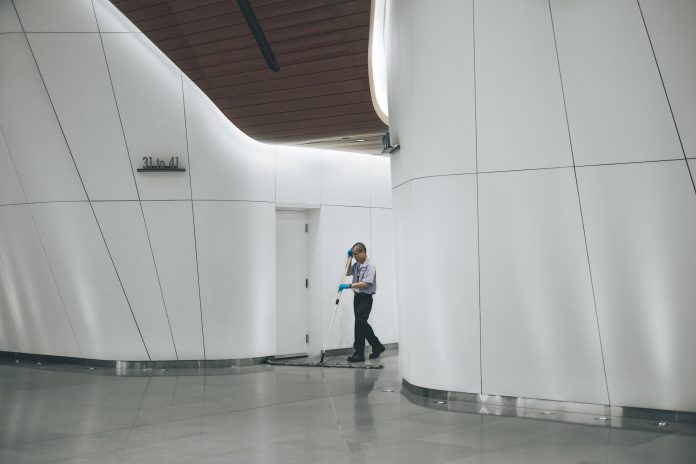The cost of living crisis is a growing problem that affects people around the world. With inflation on the rise and wages stagnant, it’s becoming harder for individuals and families to make ends meet. In this blog post, we will explore the causes of increasing inflation and decreasing wages, as well as their effects on individuals, families, businesses and communities. We’ll also look at strategies to address the problem before delving into possible solutions for a brighter future.
1. Overview of the Cost of Living Crisis
2. Examining the Causes of Increasing Inflation and Decreasing Wages
3. Exploring the Effects on Individuals and Families
4. Impact of inflation on Businesses and what can be done
Overview of the Cost of Living Crisis
The Cost of Living Crisis affects people from all walks of life, as the cost of everyday staple items continues to increase. From food costs to medical bills and ever-growing rent prices, one’s wages are often not enough to keep up. To make matters worse, fewer jobs with lower pay are available and living expenses continue to climb regardless. This combination has led to the financial insecurity of countless individuals, often leading them into a cycle of perpetual debt or poverty. It is clear that drastic measures must be taken in order for this Cost of Living Crisis to be remedied.
Examining the Causes of Increasing Inflation and Decreasing Wages
Inflation is at the highest it’s been in 30 years. Increasing inflation and decreasing wages can be a troubling combination to experience. Examining the causes of this pattern is an important task, as it can have a dramatic impact on the economy and individual workers’ livelihoods. COVID-19, global market pressures, and industry disruptions are all factors that can be driving inflation higher while pushing wages lower. Increasing prices can lead to decreased consumer spending, furthering deflationary cycles. By understanding the underlying causes of inflation and wage stagnation, we are better able to act in our collective interest to ensure long-term economic health.
Exploring the Effects on Individuals and Families
The cost of living crisis is becoming an increasingly important issue for individuals and families to contend with. Thanks to inflation, wages have not kept up with rising prices despite record rates of employment, creating a difficult economic situation that affects all types of households. The resulting financial strain can be felt across income brackets and poses an immense risk to the well-being of families everywhere. Making matters worse, the crisis is particularly hard on low-income and middle-class households due to the higher relative effect price increases have on budgets. Cost of living hardships are unfortunately commonplace these days but thankfully there is a growing awareness of what can be done to alleviate such issues and create a more equitable society.
With families of all sizes feeling the squeeze when it comes to the cost-of-living crisis, it’s up to individuals to take measures in their lives to try and counter rising prices. This might include looking for opportunities to switch to lower prices with existing providers, cutting back on luxuries or even exploring innovative ways to save money such as bartering or carpooling. And although these methods might seem small in isolation, they can make a big difference when lots of families take action together. By taking individual responsibility, families can unite in battle against the cost-of-living crisis.
Impact on Businesses
The cost of living is one of the most pressing issues facing businesses today. As inflation continues to rise and wages struggle to keep up, more and more businesses are feeling the squeeze trying to keep their doors open while paying their employees a livable wage. If wages continue to remain stagnant while costs go up, consumers will be unable to purchase goods and services from local businesses, leading to an economic crisis as companies lay off employees, leaving even fewer people able to afford said products. The cost of living crisis is taking its toll on many businesses and it will require creative solutions from employers, lawmakers, and everyday citizens in order for our economy to remain stable.
Inflation is a serious threat to businesses of all sizes, as it causes prices to rise while reducing the purchasing power of customers. To combat inflation, businesses need to focus on cost-cutting strategies and improving efficiency wherever possible. This includes evaluating pricing structures in order to adjust prices, when appropriate. Additionally, making upgrades to infrastructure and investing in modern technology can help businesses reduce their operating costs and benefit from automated processes that increase productivity. Lastly, companies should look for ways of increasing sales or creating alternative revenue streams that help keep profits steady regardless of inflationary forces. By taking these thoughtful steps, businesses can better manage the effects of inflation and ultimately contribute to a more robust economy.
In conclusion, the cost of living crisis is a major challenge for individuals, families and businesses alike. Inflation continues to outpace wages, leaving households with less disposable income and businesses scrambling to keep prices competitive. To combat this issue, it is essential for individuals to take measures in their lives to save money and for businesses to look for ways to reduce costs and increase efficiency. By doing so, we can ensure a more equitable society for all.



 Bitcoin
Bitcoin  Ethereum
Ethereum  Tether
Tether  XRP
XRP  Solana
Solana  USDC
USDC  TRON
TRON  Cardano
Cardano  Lido Staked Ether
Lido Staked Ether  Avalanche
Avalanche  Toncoin
Toncoin